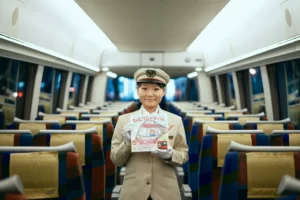How Will Tokyo Change in 7 Years?
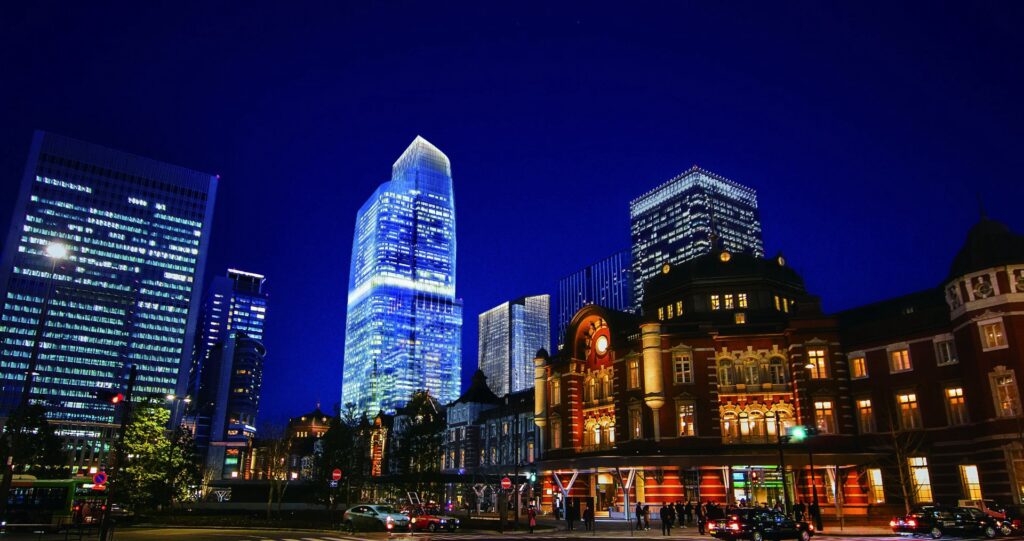
The opening of the maglev train, the completion of Shibuya’s redevelopment. Tokyo is markedly changing as it advances towards 2027.
The original article “TOKYO 2027 MAP” is a part of the WORK MILL with Forbes JAPAN Issue 3 —THE AGE OF POST-INNOVATIONALISM©WORK MILL, published on October 2, 2018
The shift of the center towards the bay area
“The development is centered around Marunouchi and Roppongi now, but it will shift towards the bay area.” So predicts architect Ryuji Fujimura. Many facilities, including the Olympic Village, are being constructed in Harumi for the 2020 Olympics. The Village will be reused as residential apartments after the Games. Together with Mitsui Fudosan’s new highrise apartment, there will be around 5,600 additional rooms on the market. Harumi’s redevelopment is only a fraction of the “Tokyo Bay Area Vision,” drawn up by the city of Tokyo in July. Toyosu aims to boost employment and commerce with the new Bayside Cross Tower, a massive office building connected to LaLaport Toyosu. Harumi is promoting a resort-like environment with the Tokyo International Cruise Terminal, planned to open in 2020, while Takeshiba is creating a sleek waterfront. Tokyo is focused on the bay area from a bird’s-eye view and plans to take advantage of each area’s characteristics. With housing, business, and commerce, the bay area will be a multi-functional district. But according to Fujimura, this isn’t the first time Tokyo has focused on the bay area. “In the 1980s, Tokyo tried to turn the bay area into the center of Asia’s financial market to compete with Singapore’s Marina Bay. But the plan was called off in 1995 when Governor Yukio Aoshima canceled the World City Expo. The plans for 2020 may be a chance to recover those old ideas.”
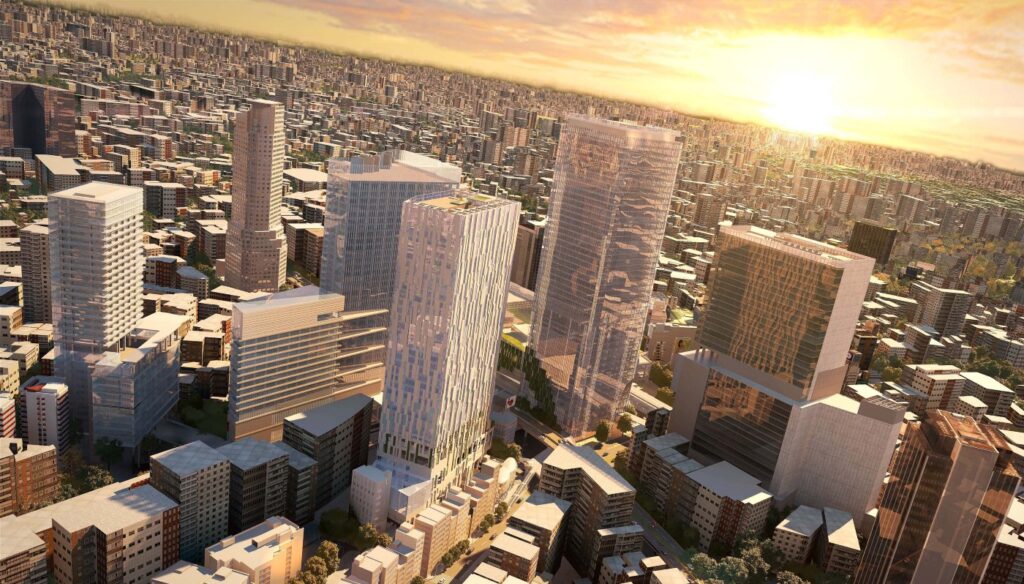
Top, image of Shibuya in 2027. Besides Shibuya Stream, skyscrapers will tower over the Sakuragaoka area and the scramble crossing. Compared to the bottom picture of 2018, the station front will be much livelier.
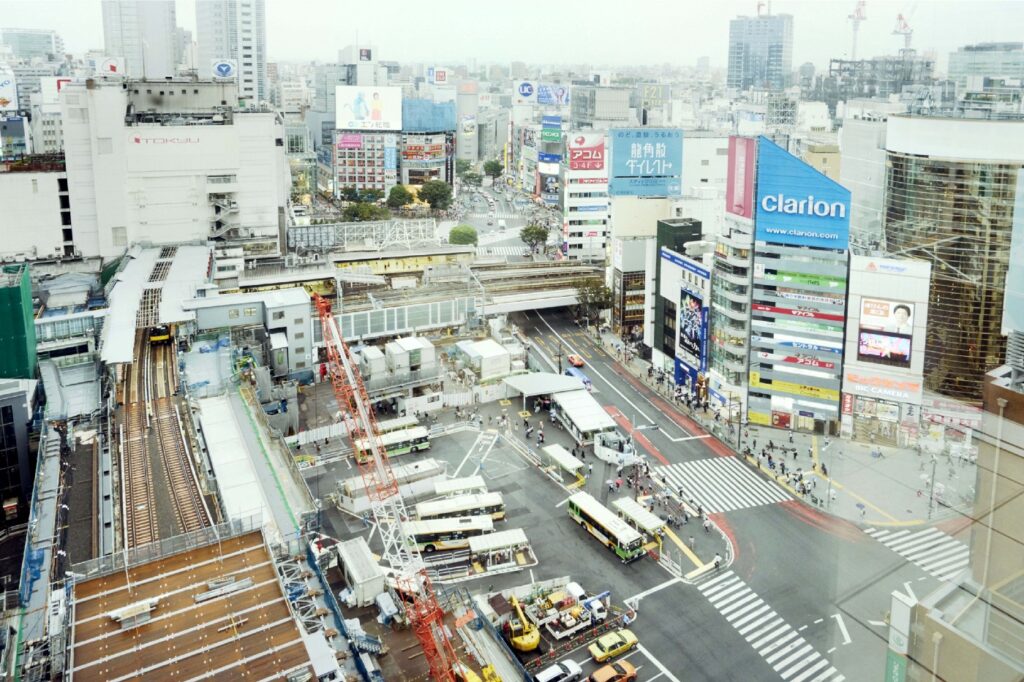
A“circular” expansion
Meanwhile, Shibuya and Marunouchi both have great projects in store for them. Tokyu Corporation’s concept for “Entertainment City SHIBUYA” is underway. The Sakuragaoka area is undergoing an overhaul until 2023, which includes not only commercial facilities but also housing. And in 2027, a 230-meter high skyscraper will tower over the famous scramble crossing. The new Shibuya Stream already opened last September. Shibuya has long been loved by the young generation, while also gaining fame as a startup area since 2000. Shibuya aims to bring these characteristics together to create a city of work, play, and life. What’s notable about Shibuya’s redevelopment is the newly opened Shibuya Bridge, which houses a nursery school along with commercial facilities. A promenade will be constructed to make it easier to access the Daikanyama area by foot. Urban Core, a 3D pedestrian route, will also be built along with the Sakuragaoka redevelopment. Masafumi Ota of Tokyu Corporation explains how connecting the neighboring stations is one of the redevelopment’s main goals. “Right now, most people get off at Shibuya Station and wander around Dogenzaka or Miyamasuzaka. But with the new promenades, people will be able to stroll around to nearby stations. New options will be available for Shibuya visitors.” Tokyu Community aims to create a city where people can come across both luxury brands and street cultures. With the “Greater SHIBUYA” project, which extends the Shibuya area to a 2.5 km circumference, places like Harajuku and Hiroo, which used to be “spots” on a map, will become a part of the “circle” with Shibuya in the center. Mitsubishi Estate’s “Tokiwabashi Project” also aims to expand in a circle. A 390-meter high skyscraper and 7,000-square meters of open spaces are under construction. The soon-to-be tallest building in Japan will join the adjacent Yaesu and Nihombashi areas. Existing financial towers are also being updated, and the area around Tokyo Station is being invigorated with the latest technology and optimized traffic. Their target is to have 100 million visitors per year.
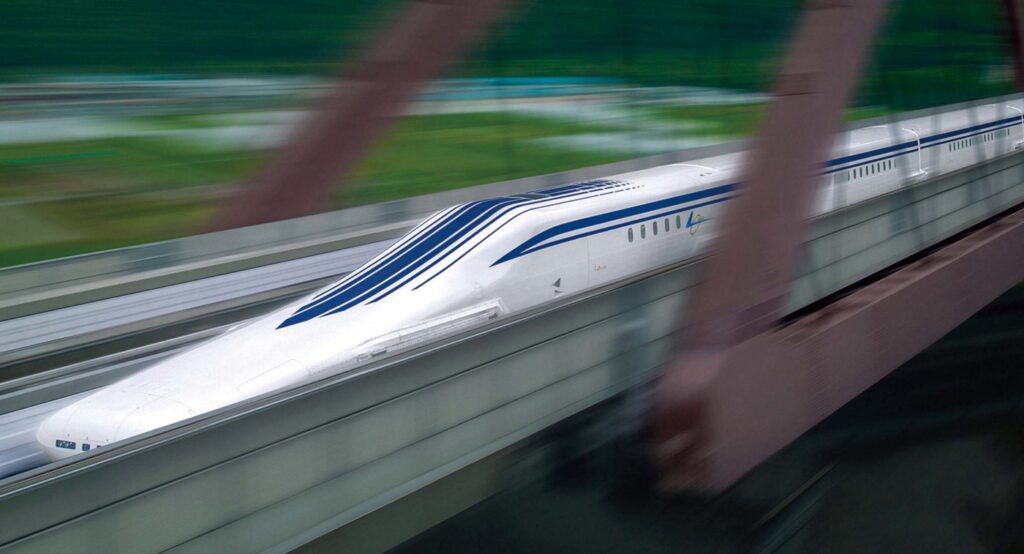
The maglev Shinkansen. The magnets on the body and the rails will act to push and pull, raising the train 10 cm above the rails as it runs.
Toranomon, the joint between the east and the west
Fujimura also has his eyes on Toranomon as the junction between the bay area and central Tokyo. Toranomon is the literal junction of the Loop Road №2 as one passes from central Tokyo to the bay area by car. The road connecting Toranomon, Shiodome, and Harumi may become vital for travelers to the bay area. At Toranomon, many projects such as Toranomon Trust Tower (planned for 2020) and the 54-story Residential Tower (planned for 2021) are under construction. “A new city core might form around Toranomon,” predicts Fujimura. Another expansion that can’t be forgotten is the maglev Shinkansen, which will fly from Shinagawa to Nagoya in just 40 minutes and to Osaka in 67 minutes at the world’s fastest speed of 500 km/hour (planned for 2045). JR Tokai imagines a new colossal city not just confined to Tokyo. Besides reducing the transit time between the Kansai, Chubu, and Kinki regions, they plan to increase the number of Hikari and Kodama trains to link the cities even tighter. If it only takes 1 hour, commuting could become a very viable possibility.




